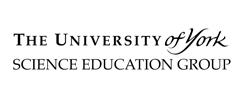- View more resources from this publisher
 University of York Science Education Group (UYSEG)
University of York Science Education Group (UYSEG)
The Earth in Space *suitable for home teaching*
A Year 11 module from the Salters’ Key Stage Four double award science course. This module begins with revision of prior knowledge about stars, planets, moons and other bodies found in space. Students then consider gravity as the force which controls movement of bodies in space. They study the effect of gravity on falling objects and how air resistance limits the rate of fall. Experiments with motion in a circle lead to ideas about satellites and the energy needed to launch them into orbit. Finally, theories of the origin of the Universe and the life-cycle of stars are discussed.
Revision of prior knowledge leads to modelling the scale of the Solar System and consideration of the source of energy in stars.
Key features of gravitational attraction are discussed, as a basis for understanding the difference between weight and mass. The motion of bodies falling through the atmosphere is considered. Students carry out calculations related to the energy needed to launch rockets.
The need for a centripetal force to keep an object in circular motion is illustrated with various examples. The energy needed to launch a satellite is estimated and the movement of satellites in different types of orbit is considered. The effect of the Moon in causing tides on Earth is analysed.
Students explore the evidence which has led to the “Big Bang” theory of the origins of the Universe. Views of ancient and modern cultures about the Universe are compared, illustrating the difference between ‘cultural’ models and ‘scientific’ ones.
Section 1: Earth’s near and distant neighbours
Revision of prior knowledge leads to modelling the scale of the Solar System and consideration of the source of energy in stars.
Section 2: Why do we stick to the Earth?
Key features of gravitational attraction are discussed, as a basis for understanding the difference between weight and mass. The motion of bodies falling through the atmosphere is considered. Students carry out calculations related to the energy needed to launch rockets.
Section 3: Satellites
The need for a centripetal force to keep an object in circular motion is illustrated with various examples. The energy needed to launch a satellite is estimated and the movement of satellites in different types of orbit is considered. The effect of the Moon in causing tides on Earth is analysed.
Section 4: The Universe and everything
Students explore the evidence which has led to the “Big Bang” theory of the origins of the Universe. Views of ancient and modern cultures about the Universe are compared, illustrating the difference between ‘cultural’ models and ‘scientific’ ones.
Show health and safety information
Please be aware that resources have been published on the website in the form that they were originally supplied. This means that procedures reflect general practice and standards applicable at the time resources were produced and cannot be assumed to be acceptable today. Website users are fully responsible for ensuring that any activity, including practical work, which they carry out is in accordance with current regulations related to health and safety and that an appropriate risk assessment has been carried out.
Downloads
-
The Earth in space 9.7 MB





